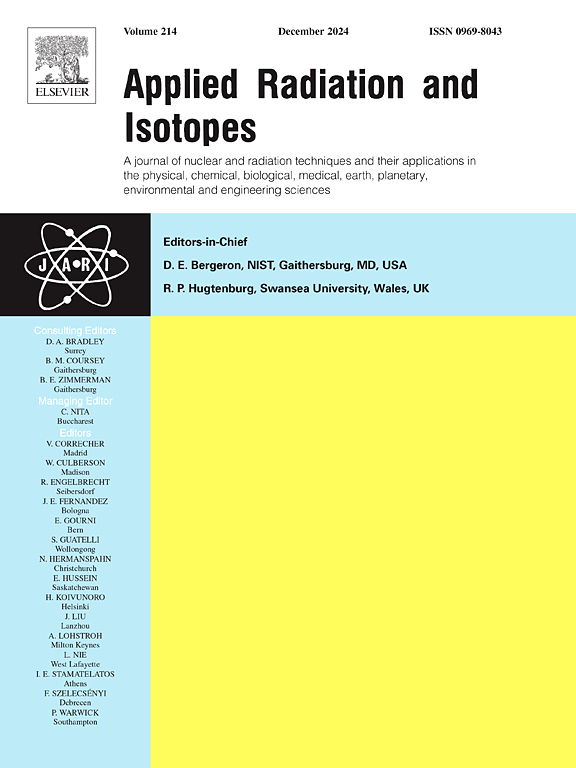用于评价金属和塑料混合清除物放射性的实用换算系数的研制。
IF 1.6
3区 工程技术
Q3 CHEMISTRY, INORGANIC & NUCLEAR
引用次数: 0
摘要
在涉及单一材料类型的间隙测量中,应用转换因子将测量结果转换为基于假设均匀密度的活度。然而,这个因素被发现低估了物质混合物中的活性。在本研究中,我们提出了一种识别混合物中检测灵敏度最低的位置(最小位置)的方法,并评估了其对转换因子的适用性。我们通过x射线计算机断层扫描(x射线CT)获得的线衰减系数的二维分布的加权平均值来计算这个最小位置。我们可以用图像的中心作为原点在极坐标中确定角度,但距离仍然不确定。然而,使用这种方法,可以沿着穿过图像中心的任何直线确定最小位置。这种方法有可能在以前保守的活性评价是不可行的情况下,提高混合物的活性评价。本文章由计算机程序翻译,如有差异,请以英文原文为准。
Development of a practical conversion factor for evaluating radioactivity in mixed metal and plastic clearance objects
In clearance measurements involving a single material type, a conversion factor was applied to convert measurement results to activity based on an assumed uniform density. However, this factor has been found to underestimate activity in material mixtures. In this study, we proposed a method to identify the location with the lowest detection sensitivity (minimum location) in a mixture and evaluated its applicability to the conversion factor. We calculated this minimum location by determining the weighted average of a two-dimensional distribution of line attenuation coefficients, obtained through X-ray computed tomography (X-ray CT). We were able to identify the angle in polar coordinates using the center of the image as the origin, but the distance remained indeterminate. However, with this method, the minimum location can be identified along any straight line passing through the center of the image. This method has the potential to enhance activity evaluation for mixtures in cases where conservative evaluation of activity was previously unfeasible.
求助全文
通过发布文献求助,成功后即可免费获取论文全文。
去求助
来源期刊

Applied Radiation and Isotopes
工程技术-核科学技术
CiteScore
3.00
自引率
12.50%
发文量
406
审稿时长
13.5 months
期刊介绍:
Applied Radiation and Isotopes provides a high quality medium for the publication of substantial, original and scientific and technological papers on the development and peaceful application of nuclear, radiation and radionuclide techniques in chemistry, physics, biochemistry, biology, medicine, security, engineering and in the earth, planetary and environmental sciences, all including dosimetry. Nuclear techniques are defined in the broadest sense and both experimental and theoretical papers are welcome. They include the development and use of α- and β-particles, X-rays and γ-rays, neutrons and other nuclear particles and radiations from all sources, including radionuclides, synchrotron sources, cyclotrons and reactors and from the natural environment.
The journal aims to publish papers with significance to an international audience, containing substantial novelty and scientific impact. The Editors reserve the rights to reject, with or without external review, papers that do not meet these criteria.
Papers dealing with radiation processing, i.e., where radiation is used to bring about a biological, chemical or physical change in a material, should be directed to our sister journal Radiation Physics and Chemistry.
 求助内容:
求助内容: 应助结果提醒方式:
应助结果提醒方式:


